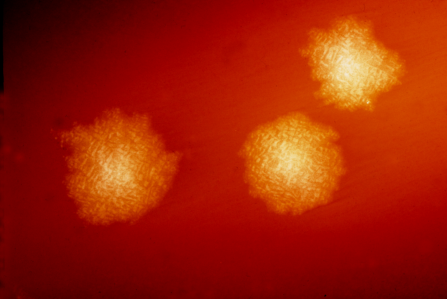Researchers focus on menacing 'superbug,' hoping to identify what makes patients susceptible

Scientists around the world have been working in earnest to improve understanding of an increasingly virulent superbug, Clostridium difficile. The highly contagious hospital-acquired pathogen, designated by the Centers for Disease Control and Prevention as one of the five most urgent threats to the U.S. healthcare system, causes more than 500,000 infections and 29,000 deaths each year at a total societal cost exceeding $5 billion.
Biologists at Texas A&M University and Baylor College of Medicine have teamed up in a novel National Institutes of Health-funded systems biology study aimed at tackling the problem at its source—the initial point of infection—in hopes of pinpointing what makes patients susceptible to it in the first place.
Prior studies have shown C. difficile infection to be strongly correlated with a high abundance of secondary bile acids that are toxic to C. difficile in laboratory settings. These small molecules are generated by a healthy gut microbiome from primary bile acids that are synthesized in the liver.
Texas A&M biologist and 2020 Chancellor's EDGES Fellow Joseph Sorg says scientists have long viewed these small molecules as a key protector in preventing C. difficile infection. The research was first featured by Sorg Laboratory graduate student Andrea Martinez Aguirre in a paper published earlier this fall in the journal PLOS Pathogens with help from Tor Savidge's group at Baylor College of Medicine.
"Many ongoing efforts are developing probiotic treatment options for C. diff-infected patients—efforts that focus on restoring secondary bile acids to patients," Sorg said. "Our findings show that these treatments should instead focus on microbes that consume nutrients important for C. diff growth and that secondary bile acids are a red herring for protection."
As the basis of their study, the team used mice derived germ-free at Baylor College of Medicine that were colonized with a single species of bacteria known to be involved in secondary bile acid generation and strongly correlated with a protective C. difficile environment. As an additional control measure, they selected a mutant mouse strain purchased through the NIH's Knockout Mouse Project that was bred at Texas A&M and distinct for its inability to synthesize a major class of bile acids, thereby further limiting the secondary bile acid pool.
"Surprisingly, we found that mice colonized with these microbes (C. scindens, C. hiranonis, or C. leptum) protected against C. diff disease but did not produce secondary bile acids," Sorg said.
Sorg joined the Texas A&M Department of Biology in 2010 and has been working since his postdoctoral days to unlock C. difficile's basic science, from its physiology to its virulence. He earned his doctorate in microbiology at the University of Chicago in 2006, the same year the C. difficile genome was sequenced, and since has emerged as one of the pioneers of C. difficile study.
More information: Andrea Martinez Aguirre et al, Bile acid-independent protection against Clostridioides difficile infection, PLOS Pathogens (2021). DOI: 10.1371/journal.ppat.1010015



















